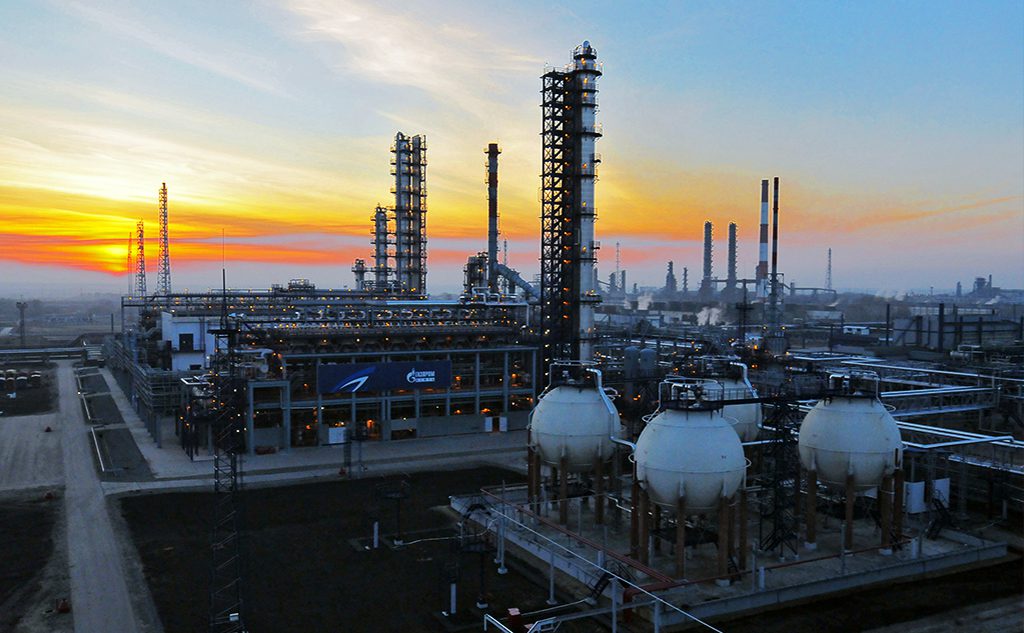Acid gas has a high content of acidic gases such as carbon dioxide
(CO2) or H2St. Pipeline natural gas specification is typically less than
2% CO2. Acid gas fields with up to 90% CO2 exist, but the normal
range for sour raw gas is 20-40%.
o Condensates are a mixture of hydrocarbons and other components
in the above table. These are normally gaseous from the well but
condense out as liquid during the production process (see previous
chapter). This is a refinery and petrochemical feedstock.
Raw gas is processed into various products or fractions:
o Natural gas in its marketable form has been processed for a
specific composition of hydrocarbons, sour and acid components,
etc., and energy content. Content is typically 90% methane, with
10% other light alkenes.
o Natural gas liquids (NGL) is a processed purified product
consisting of ethane, propane, butane or some higher alkenes
separately, or in a blend. It is primarily a raw material for
petrochemical industry and is often processed from the condensate.
o Liquefied petroleum gas (LPG) refers to propane or butane or a
mixture of these that has been compressed to liquid at room
temperature (200 to 900 kPa depending on composition). LPG is
filled in bottles for consumer domestic use as fuel,
and is also used
as aerosol propellant (in spray cans) and refrigerant (e.g., in air
conditioners). Energy to volume ratio is 74% of gasoline.
o Liquefied natural gas (LNG) is natural gas that is refrigerated and
liquefied at below -162 °C, for storage and transport. It is stored at
close to atmospheric pressure, typically less than 125 kPa. As a
liquid, LNG takes up 1/600 of the volume of the gas at room
temperature. Energy to volume ratio is 66% of gasoline. After
transport and storage it is reheated/vaporized and compressed for
pipeline transport.
o Compressed natural gas (CNG) is natural gas that is compressed
at 2-2,2 MPa to less than 1% of volume at atmospheric pressure.
Unlike higher alkenes, methane cannot be kept liquid by high
pressure at normal ambient temperatures because of a low critical
temperature. CNG is used as a less costly alternative to LNG for
lower capacity and medium distance transport. Methane for vehicle
fuel is also stored as CNG. Energy to volume ratio is typically 25% of
gasoline.
62
5.3 Gas processing
Raw natural gas must be processed to meet the trading specifications of
pipeline and gas distribution companies. As part of the purification other
components such as NGL is produced, and pollutants extracted.
The diagram shows an overview of a typical gas plant. Marketable products
are listed in blue and the production process is shown in grey as it is not
considered part of the gas plant.
Figure 10. Typical gas plant
63
5.3.1 Acid gas removal
Acid gases such as carbon dioxide and hydrogen sulfide form acids when
reacting with water, and must be removed to prevent corrosive damage to
equipment and pipelines.
Hydrogen sulfide is also toxic and total sulfur
content is normally regulated.
The main removal process can be based on several principles:
Absorption allows
acidic gases to be
dissolved in a solvent,
to be released by
regeneration in a later
stage. Amine
absorption (as shown
on the right) is the most
common process for
acid gas removal.
Monoethanolamine
(MEA) dominates for
CO2 removal. Solutions
with inorganic solvents
based on ammonia are
under development. Ill:
Wikipedia
A typical amine gas treating process (as shown in the flow diagram) consists
of an absorber unit, a regenerator unit and accessory equipment. In the
absorber, a "lean" amine solution absorbs H2S and CO2 from the upflowing
sour gas to produce a sweetened gas stream as a product. The "rich" amine
solution contains the absorbed acid gases and is routed into the regenerator
(a stripper with a reboiler). The stripped overhead gas from the regenerator
is concentrated H2S and CO2.
Adsorption relies on the molecules to bind to the surface of certain solids.
After a certain time the material must be regenerated to release the gas.
Principles used include pressure swing adsorption (PSA), temperature swing
adsorption (TSA) and electric swing adsorption (ESA).
Cryogenic removal uses a turbo expander: A gas turbine is driven by the
expanding gas which then cools to below the dew point for the gas to be
removed.
64
The inlet gas to the compressor is precooled by the acid gas removed.
Cryogenic removal is most often used when the content of carbon dioxide is
high, typically around 50%.


